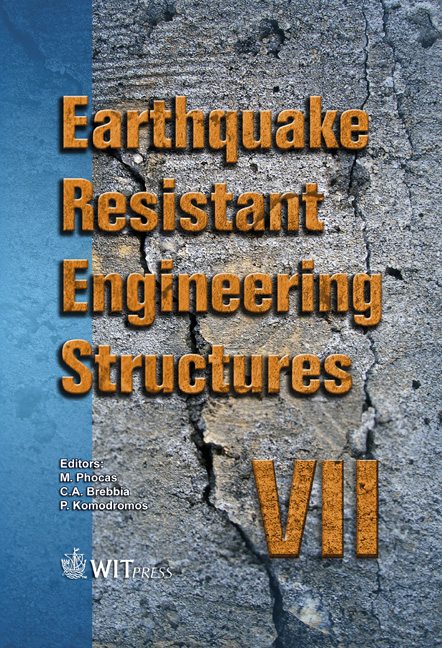State Of The Art Of The Application Of Seismic Isolation And Energy Dissipation Systems To Civil Structures In Cyprus
Price
Free (open access)
Transaction
Volume
104
Pages
10
Page Range
305 - 314
Published
2009
Size
2,499 kb
Paper DOI
10.2495/ERES090281
Copyright
WIT Press
Author(s)
P. Komodromos & M. C. Phocas
Abstract
Structural control through base isolation and energy dissipation systems has been increasingly implemented internationally in recent years and has proven to be one of the most promising strategies for the earthquake safety of structures. Nevertheless, only recently there have been applications of passive structural control in Cyprus. Whereas the integration of passive damping devices within a structure aims at the energy dissipation within specific structural zones, the concept of base isolation aims at the minimization of the input seismic energy above the isolation level. This paper gives an overview of the current application status of the control techniques to some civil structures in Cyprus: a multi-storey r/c building of the Cyprus Sport Organization with steel diagonals and viscous dampers; a cable suspended footbridge with tuned mass dampers; three commercial buildings of steel bare rigid frames and braced frames, where base isolators in the form of high damping rubber bearings, elastomeric bearings and friction pendulum bearings are placed on top of the basement columns; a retrofit planned for a multi-storey building for the Telecommunications Authority of Cyprus, partly to be supported on friction seismic isolation devices; and four highway bridges, supported on either elastomeric bearings with dual lead cores or on friction pendulum bearings. Keywords: structural control, seismic isolation, energy dissipation, seismic performance.
Keywords
structural control, seismic isolation, energy dissipation, seismic performance.





